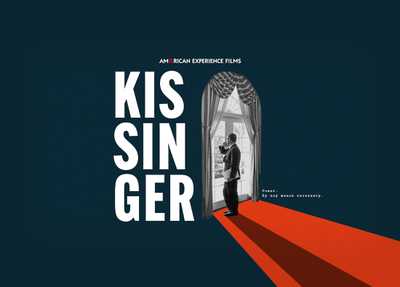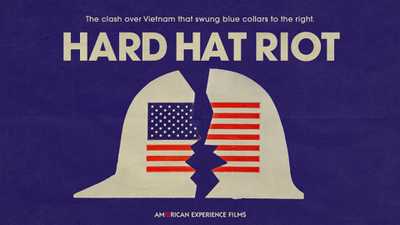'It Was Like Watching an Accident in Slow Motion'
What was it like to live through the Love Canal tragedy? Residents, reporters, and government administrators talk, 45 years later

Michael Brown was a reporter for the Niagara Gazette when he first heard about Love Canal, in 1977. Residents in the neighborhood, which was located in the southeast corner of Niagara Falls, were having unexplained health issues—seizures, liver and kidney problems, cancers and miscarriages—with alarming frequency. Brown went to investigate. “It was an incredible scene,” he remembered of his first visit. “You had kids playing around there. You had chemicals exposed.” Love Canal’s inhabitants had been complaining about strange odors and dark sludge in their basements for years. “When you saw what was going on at Love Canal it was very difficult to remain a reporter,” Brown told American Experience. “It was like watching an accident in slow motion.”
Love Canal began as a project of epic boosterism. In the 1890s, developer William T. Love proposed an industrialized utopia based on hydroelectric power, drawing on a canal that would have connected the upper and lower Niagara Rivers. But Love’s funding dried up, he skipped town, and all that was left of Model City was a 3,200-by-800 foot ditch that would fill up with rainwater—until, that is, it was filled with toxic waste.
Beginning in the 1940s, Hooker Electrochemical Company, one of the giants of Niagara Falls industry, began dumping into the abandoned canal; over the next decade, Hooker deposited almost 22,000 tons of hazardous chemical byproducts before covering the area over with earth. Then in 1953, the company deeded the land to the Niagara Falls Board of Education for one dollar—with the proviso that they bore no liability for any future problems. The city then immediately erected an elementary school on the property. Residential development followed.

“After we lived at Love Canal for a year,” said former resident Lois Gibbs, “[my son] Michael started getting sick. So first it was like asthma, then it was a urinary disorder.” Michael experienced his first grand mal seizure once he started attending that school built atop a landfill. “The pediatrician had no answer,” she remembered. “The only answer he could give is, ‘well, God knows you're a caring mom and he gave you a sickly child because he knew you'd take care of it.’ I'm like, ‘no, God gave me a healthy child. Something else is wrong here, and I don't know what it is.’”
Gibbs and other residents began a multiyear campaign of relentless pressure on public officials at the local, state and federal levels that ultimately culminated, in 1980, in the Comprehensive Environmental Response, Compensation, and Liability Act—otherwise known as Superfund. And after years of litigation, Occidental Chemical Corporation, which had absorbed Hooker in the 1960s, agreed to a claim settlement for some Love Canal families. “What everyone saw at Love Canal was democracy,” Gibbs said, reflecting on that multi-year saga. “People standing together, speaking truth to power and demanding making it right. And I think that that's the biggest lesson.”
This is some of the Love Canal story, as told through the images and the recollections of its major players, almost 50 years later.

Niagara Falls was known for its tourist industry. People come there for honeymoons, to see the Falls. It’s just spectacular. It’s one of the wonders of the world, and there was an understandable concern about the effect that this [story] would have." - John LaFalce, former U.S. Representative
The Hooker Chemical Company employed three thousand people in that county. They were the big economic player…And they were very, very valuable to the city." - Michael Brown, reporter

I was brought into that neighborhood because it was government subsidized housing. 200 dollars down and 135 dollars a month. Where else can you get a brand new house? God, that was a gift from God I thought." - Debbie Cerrillo Curry, former resident
It was just an ideal neighborhood. Most of the people were young. Starter homes for the most part. And the thing I loved most about this community is it was dynamic and alive.” - Lois Gibbs, former resident

It made me sick to think my kids were going to the school with all that junk under there. We had no idea. We had no idea that it was as severe as it was.” - Debbie Cerrillo Curry, former resident
People were developing what they thought was asthma. People started to have kidney problems, bladder problems. Some of the children had behavioral problems, a complete change from how they were…Ordinarily people don’t just have these problems in a great number without something being wrong.” - Jannie Grant-Freeney, former resident

I remember there were drums exposed, they were collapsing. There had been a very hard winter and when the snow melted it was like a bathtub effect. The chemicals came out and out to all of the surrounding areas.” - Michael Brown, reporter

Everybody had a story to tell. People would take me down to their basements and they'd show me the black ooze coming through the wall. They would take me down to their sump pump and say, smell it. It smells like chemicals. Women would talk to me about miscarriages and stillborns and babies with birth defects.” - Lois Gibbs, former resident

We were at my house one night and we're like putting these things on a pin map, red is for miscarriages, blue is for cancer. And we were realizing that, oh my gosh, some of these things are really clustering, like epilepsy around my house and birth defects over here.” - Lois Gibbs, former resident

That was as much dioxin [triclorophenol] as had been spread in Vietnam with all the Agent Orange. That was the amount that you could calculate as being in Love Canal.” - Michael Brown, reporter
That was Greek to all of us. We had no clue what those numbers were. They’d say ‘you had benzine and toluene and trichloroethene’ and all these -ines and and parts per million or per billion. We were just plain old folks not knowing what that whole thing was all about. They really blindsided us.” - Debbie Cerrillo Curry, former resident
We started doing an inventory of toxic sites over the country and when we did that we found many sites, thousands of sites, of all kinds. Some close to homes, some not as close but we had them out there and nobody was doing anything about them.” - Charles Warren, former regional administrator, EPA

The fight came to us. We didn’t look for it. It came to us and we had to do what mothers and fathers would do. You protect your children.” - Barbara Quimby, former resident

Once it was determined that we had this serious problem at Love Canal it became a precedent for working on other problems throughout the entirety of the United States…You needed a comprehensive legal framework. The Carter administration realized that, and the EPA realized that, and the Congress realized that."- John LaFalce, former U.S. Representative
I'm just as angry today as I was back then. Not just for my family and the families at Love Canal, but families I've encountered over the last 40 years. No one gets to say because you don't make a lot of money, because your formal education isn't beyond high school, that you don't deserve the best possible environment to live, work, and play and pray.” - Lois Gibbs, former resident
They're still selling those houses over in that neighborhood. That's crazy. Absolutely crazy.” - Grace McCoulf, former resident

I don't know that you can ever have justice for what happened at Love Canal. I don't know that there’s such a thing.” - Michael Brown, reporter
It's 45 years later now, but I still feel it. I talk about it because I think it's important. My mantra is that no other child will die because of corporate irresponsibility.” - Luella Kenny, former resident
Stand up for what you believe in, and know that it’s your right as a human being to your life, to your health, to your children’s health, and your children’s children’s health.” - Debbie Cerrillo Curry, former resident

Since pre-colonial times, Americans' relationship to the natural world has shaped politics, policy, commerce, entertainment and culture. In this collection, delve into our complicated history with the environment through American Experience films exploring wide-ranging topics, from our struggles to exert dominion over nature to our attempts to understand and protect it.






